Ever wonder how we’re going to solve some of the world’s biggest problems like curing diseases, achieving renewable energy, or improving education? Artificial intelligence may be our secret weapon. AI systems are getting smarter and more capable every day, and they’re already tackling some of humanity’s greatest challenges.
You’ve probably heard of AI beating humans at games like chess or Go, but AI is doing a whole lot more than winning at board games. AI systems are helping doctors detect diseases, discover new drugs, predict the effects of climate change, and personalize education. AI can analyze huge amounts of data, spot patterns and insights that humans often miss.
Some of the world’s biggest tech companies like Google, Microsoft, and IBM are investing heavily in AI and putting these powerful systems to work solving real-world problems. AI won’t solve everything, but in partnership with humans, AI can help unlock solutions to issues that have stumped us for generations. The future is looking bright, and AI is helping to light the way.
AI for Healthcare: Detecting Diseases and Personalizing Treatment
AI is revolutionizing healthcare in exciting ways. One of the biggest impacts is in diagnosing diseases and personalizing treatment.
AI systems can detect patterns in huge amounts of health data to identify diseases. For example, AI has been used to analyze retinal scans and detect signs of diabetic retinopathy, a leading cause of blindness. AI can also analyze CT scans to detect lung cancer and skin images to detect skin cancers, often with greater accuracy than human doctors.
AI is also enabling personalized medicine. By analyzing a patient’s genetics, health history, and lifestyle, AI can predict which treatments have the best chance of success for that individual. This means doctors can prescribe targeted therapies customized for each patient.
Virtual nursing assistants and chatbots are providing 24/7 monitoring and advice. AI assistants can track symptoms, remind you to take medication, and alert you if your condition changes. They can also answer health questions and provide self-care recommendations anytime.
The future is bright. As AI continues to get smarter, diagnoses will become faster and more accurate. Personalized care plans will consider all aspects of a person’s health and wellness. And virtual assistants will provide compassionate support for managing chronic illnesses and overall health.
While AI won’t replace doctors, it will enhance their abilities and allow them to focus on the human elements of care. Together, humans and AI can improve health outcomes, reduce costs, and make high-quality care more accessible. The healthcare of tomorrow is here, and it’s powered by AI.
AI for Education: Adaptive Learning and Automated Tutoring
AI is transforming education in exciting ways. One area seeing huge advances is adaptive learning and automated tutoring.
Adaptive learning systems track your progress and adjust lesson difficulty based on your needs. If you’re struggling with a concept, the system will slow down and provide more examples and practice problems. If you’ve mastered something, it will accelerate and introduce new material. This personalized approach helps ensure you don’t get left behind or held back.
Automated tutoring systems provide one-on-one guidance and feedback. AI tutors can evaluate your work, pinpoint mistakes, and give customized hints and explanations to help you solve problems. Some even use natural language processing to understand students’ questions and provide spoken responses, creating a more engaging learning experience.
Anthropic’s Constitutional AI helps students learn ethics and values through simulated conversations.
Carnegie Learning’s MATHia platform provides adaptive math instruction for grades 6-12.
Third Space Learning uses AI tutors to provide affordable one-on-one math tutoring at home.
While AI won’t replace human teachers, it’s enhancing education in a big way. Adaptive learning and automated tutoring systems free up instructors to focus on mentoring students, while ensuring learners get the tailored support they need to succeed. The future of education is bright, and AI will help more people access high-quality, personalized learning opportunities than ever before.
AI for Sustainability: Optimizing Energy Usage and Reducing Waste
AI is helping optimize energy usage and reduce waste in innovative ways. ###Smart meters
Utility companies are using AI to analyze data from smart meters to detect anomalies and inefficiencies in energy usage. By identifying issues like faulty equipment or wasted energy from idle devices, they can take corrective actions to cut usage and lower costs. For customers, smart meters paired with AI can provide insights into your energy usage patterns and personalized tips for improvement.
Optimized manufacturing
In factories and plants, AI is enabling new levels of efficiency and sustainability. Machine learning models can analyze huge volumes of data to optimize complex manufacturing processes, minimize excess material and energy usage, and reduce waste. AI-powered robotics and automation are also taking over dangerous, difficult, and repetitive tasks, freeing up human workers to focus on more meaningful jobs.
Reduced food waste
AI and sensors are teaming up to help tackle the massive problem of food waste due to spoilage and imperfections. “Computer vision” systems can quickly analyze the ripeness, size, shape and other attributes of fruits and vegetables to determine the optimal time for harvesting and sorting for maximum freshness. Imperfect or “ugly” produce that would normally go to waste can instead be diverted to food banks, used for juices or sauces, or fed to livestock.
Smarter cities
In cities, AI is enabling the development of “smart” infrastructure designed to improve sustainability and quality of life. Intelligent traffic management systems can analyze traffic patterns and synchronize traffic lights to reduce congestion, emissions, and fuel usage. AI-based sensors monitor air and water quality, noise pollution, and other environmental factors to help identify issues as they emerge. And smart meters, appliances, and an AI-optimized energy grid work together to balance supply and demand, cutting energy usage especially at peak times.
AI will be crucial to solving some of humanity’s greatest challenges. By optimizing complex systems, minimizing waste, and gaining insights to change behaviors, AI can drive sustainability on a massive scale. The future is bright, as long as we’re thoughtful about how we develop and apply these powerful technologies.
AI for Space Exploration: Assisting Astronauts and Discovering New Planets
AI is beginning to play an increasingly important role in space exploration. From assisting astronauts on missions to discovering new exoplanets, AI systems are tackling some of the biggest challenges of space exploration.
AI Assistants for Astronauts
Long duration space missions like traveling to Mars will require advanced AI systems to assist astronauts. AI assistants can help monitor spacecraft systems, schedule tasks, and provide information to astronauts on demand. These AI systems need to be highly reliable and able to function autonomously for long periods. Researchers are developing AI assistants focused on specific tasks, like scheduling daily activities or monitoring life support systems, that can work together to support astronauts.
Searching for Exoplanets
The hunt for exoplanets, planets orbiting other stars, requires sifting through huge amounts of data to detect the faint signals that indicate the presence of a planet. AI systems are ideally suited for this challenge and are becoming increasingly effective at detecting exoplanets. AI algorithms can scan telescope data for patterns that match what scientists expect to see for exoplanets. When a potential exoplanet is detected, AI systems help determine key characteristics like size, mass, and orbit to see if the detection should be confirmed as a real exoplanet.
Exploring the Solar System
AI is also assisting with exploring our own solar system. Autonomous spacecraft and rovers that use AI for navigation, mapping, and scientific data analysis can reach and explore distant worlds in our solar system. AI Image recognition algorithms help spacecraft identify interesting geological features on planets, moons, asteroids, and comets. Robotic spacecraft with AI autonomous controls have already explored worlds in our solar system, but future missions may use more advanced AI to make complex exploration decisions without human input.
AI will be key to unlocking the mysteries of space and pushing the boundaries of human space exploration. While human astronauts and scientists remain crucial, AI systems can take on hazardous and mundane tasks, monitor complex spacecraft, and rapidly analyze huge amounts of data. The future of space exploration is human and AI, working together.
AI for Disaster Relief: Predicting and Responding to Catastrophes
AI is being leveraged to help predict and respond to disasters around the globe. Early warning systems that detect signs of impending catastrophes can help save lives. Once a disaster strikes, AI aids relief efforts to get help to where it’s needed most.
Detecting Disasters Before They Strike
AI systems can monitor data from sensors, satellites, historical records, and social media 24/7 to identify patterns that may signal an impending disaster like floods, wildfires, earthquakes or hurricanes. For example, AI can track weather data and simulations to predict the path and intensity of hurricanes. It can also analyze satellite images to detect wildfires at early stages. With enough advance notice, authorities can evacuate people from dangerous areas, stock up on emergency supplies, and take other actions to minimize loss of life and property damage.
Optimizing Disaster Response
In the aftermath of disasters, AI helps determine where resources and relief efforts are most urgently needed. For example, computer vision systems can analyze satellite or aerial images to assess damage over large areas. AI can also analyze data from sensors, phone calls, texts, and social media to identify locations with the most severe humanitarian needs or trapped survivors.
AI-powered drones and robots are also being deployed to assist with search and rescue missions in situations that are too dangerous for humans. They use computer vision, object detection and navigation in GPS-denied environments to explore collapsed buildings or disaster sites and locate survivors. Some drones can even drop emergency supplies to people in need or reconnect communication networks.
By leveraging massive amounts of data and computational power, AI will continue to transform how we predict, detect and respond to disasters. With more advanced early warning systems and optimized relief efforts, AI has the potential to save many lives in the years to come. But for the technology to reach its full potential, more data sharing and cooperation between companies, researchers and government agencies will be required.
Conclusion
So there you have it, a few examples of how AI is already working behind the scenes to solve some of humanity’s biggest problems. While AI may seem like something out of science fiction, it’s actually helping address issues that really matter like healthcare, education, and the environment. The future is looking bright as researchers continue to develop new AI systems that can analyze huge amounts of data, detect complex patterns, and come up with innovative solutions. Instead of the robots taking over, AI is actually here to help humans tackle our greatest challenges. The potential for AI to improve lives around the world is huge. So the next time you interact with an AI system, know that it might just be helping to make the world a little bit better. The future is here, and it’s artificially intelligent!


